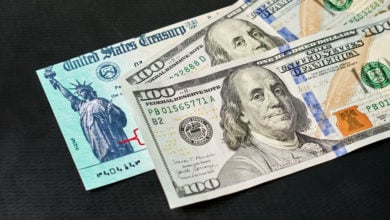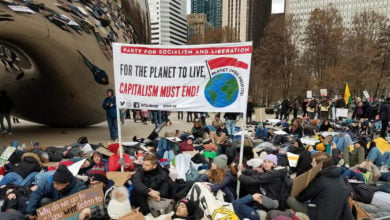Walking or driving through many neighborhoods these days, one can’t help but notice the many signs advertising houses and condominiums for sale. The rate at which homes have been selling has actually been declining for many months and is now 10 percent lower than a year ago. So, why all the “For Sale” signs?
The reason is that supply is outpacing demand in the real estate market. The supply of houses and condos coming
 |
The demand on the part of those who have the financial means to purchase houses or condos, on the other hand, has fallen off as the cost of housing, gasoline, food and other goods, along with interest rates, have risen over the past year, making home ownership unaffordable for more and more people. According to the National Association of Realtors, its housing affordability index has declined from 130.7 in 2003 to 102.8 in the second quarter of 2006.
Meanwhile, the actual need for new housing to meet the needs of the homeless and those living in overcrowded conditions continues to grow.
Despite this shift in supply and “effective demand,” sellers have been reluctant to lower their prices, and so the inventory of unsold homes has risen to a record level. Despite the reluctance to cut prices, “Price Reduced” tags attached to “For Sale” signs are increasingly common, reflecting the “buyers market” that has developed.
The emerging crisis in the housing market is likely to get worse. Roughly $2 trillion in adjustable-rate-mortgages are due to be reset to higher rates this year and next, which will result in large increases in mortgage payments for many current homeowners. The corporate downsizings announced recently by Ford, Intel, and other companies involving job losses in the tens of thousands will further depress the housing market. Foreclosure rates, already rising sharply, are likely to soar.
Harbinger of a general crisis?
Is the deflating housing bubble a harbinger of a more general economic crisis? Are there other signs that the economy is heading for a new slump—a “crisis of overproduction” such as typically afflicts capitalist economies roughly every eight to 10 years?
Merrill Lynch and Charles Schwab, two major brokerages, have recently issued reports to their customers pointing to such signs and advising caution.
Merrill Lynch, for example, made available the chart below, which shows a close correlation in the past 10 years between the outlook for housing construction and sales and the S&P 500 stock index 12 months later. The housing market index is based on surveys of homebuilders by the National Association of Homebuilders.
 |
Judging from this chart, conditions in the housing market are in a nosedive, and a major decline in the U.S. stock market may be imminent. It should be pointed out, however, that if the stock market index is lagged by 18 months instead of 12, the correlation is nearly as good. That would delay a crash by six months or so.
Since home construction and sales are highly sensitive to credit market conditions—availability of credit, level of interest rates, and so on—the housing market index shown in the chart is probably a pretty reliable advance indicator of stock prices and the economy in general. A sharp decline in the stock market itself, often, though not always, anticipates a downturn in the overall economy and corporate profits six to nine months in advance.
In an Aug. 17 advisory to customers, entitled “Recession Watch,” Liz Ann Sonders, chief investment strategist of Charles Schwab and Co., Inc., warns, “While the Wall Street consensus gives well-below-even odds of a recession or bear market, I think the risk is higher.”
“More telling than economists’ forecasts,” she continues, “is the fact that three of the most common traits leading to recessions historically … are all flashing warning signals—an inverted yield curve (when longer-term interest rates are lower than shorter-term rates), an oil price shock and a severe real estate crunch.”
A convincing case
Sonders makes a convincing case. We’ve already discussed the real estate crunch as an indicator of trouble ahead. The inverted yield curve is another. Normally, in a capitalist economy, long-term interest rates are higher than short-term rates because of the higher risk involved in “lending long.” The longer the period before the debt is repaid the more that can happen—wars, economic downturns, currency crises and so on—that can put full repayment of principal, along with interest, in question.
But during the last stage of a business cycle leading up to a crisis—usually associated with a high level of business activity, reduced unemployment and rising wages, and sharply higher raw materials and energy costs—credit becomes tight and short-term interest rates then spike above long-term rates. Sonders points out, “Even after the Fed’s August 8 pause in rate hikes, all Treasury maturities out to 30 years are yielding less than fed funds for the first time since the last recession in 2001.”
The “Fed” she refers to is the Federal Reserve Bank, the U.S. central bank, and the yield on “fed funds” is the rate—closely controlled by the Federal Reserve—at which commercial banks lend each other money overnight to cover reserve requirements.
After raising the fed funds rate by 0.25 percent at each of its previous 17 meetings, the Federal Reserve last month opted to leave rates unchanged. No doubt the downturn in housing as well as slower growth in the economy overall contributed to this decision. The approaching election was also a factor. The Federal Reserve in carrying out its monetary duties usually tries to accommodate the party in power—Republican or Democrat. Its main policy guideline, however, is what serves the interest of the capitalist class as a whole, especially finance capital.
The yield curve first inverted very briefly back in February 2006. But then the prices of U.S. treasury bonds, which are traded on the bond market, began to fall sharply. The decline in bonds caused long-term interest rates, which move inversely to bond prices since interest payments are fixed, to rise back above short rates. The bond market slump was in response to a falling dollar, which had begun to stoke inflation fears. When bond investors anticipate worsening inflation, they naturally demand a higher interest rate as compensation, which translates into lower bond prices.
Central banks act to stave off currency crisis
Up until mid-May 2006, the dollar continued to decline, along with bonds. And it wasn’t just the dollar. Every major capitalist currency began to depreciate rapidly in relation to gold, the ultimate “safe haven” for panicked investors seeking to preserve their capital and universal measure of value. Gold futures traded on the commodities exchange soared above $725 per ounce—a gain of roughly 60 percent from six months earlier. A serious monetary crisis appeared imminent.
The central banks of all the main capitalist countries then initiated a coordinated series of credit tightening moves, which staved off the crisis. Currencies stabilized and the prices of oil and other raw materials, which had soared to record highs, tumbled. Stock markets worldwide also fell sharply, bottoming in June and July. Since then, stock prices have rebounded, though traders and investors remain cautious in the face of possible further action by the central banks.
The prices of most raw materials have also rebounded. The price of oil, however, has continued to decline, partly because widespread fears of another Katrina have, so far, not been realized and oil inventories have climbed sharply. Thanks to the falling price of oil, along with the end of the summer driving season, gasoline at the pump has dropped slightly in price, easing a bit the economic pain many workers have been feeling.
The next meeting of the Federal Open Market Committee—the group headed by the new Federal Reserve chief Ben Bernanke that sets monetary policy—is on Sept. 20. It is widely anticipated, in view of the approaching elections and signs of a softening economy, that the FOMC will once again leave the federal funds rate unchanged. There is one more FOMC meeting scheduled before the election, on Oct. 24-25. If the dollar remains reasonably stable, the decision may once again be to leave rates unchanged.
What happens after that is less clear. More than likely, though, the depreciation of the dollar and other major currencies over the past several years will cause inflation to take off. This could occur even in the face of a further weakening of the economy—the dreaded “stagflation” such as occurred in the 1970s. Should this come to pass, the central banks will be forced to further tighten credit, and the next economic downturn will be at hand.
‘Soft landing’ or full-scale overproduction crisis?
The timing and severity of the next economic downturn is hard to predict. It is conceivable that conditions are such that the monetary authorities will succeed in bringing about a mini-recession, commonly referred to as a “soft landing,” and avoid a full-scale overproduction crisis for the time being.
Minor downturns such as these occurred in the mid-1980s and mid-1990s. A full-scale overproduction crisis occurs when more goods are produced than can be sold at a profit, production is cut back sharply, and massive numbers of workers are laid off.
It is possible—and even likely in view of the huge imbalance of trade between the United States and several Asian countries, the enormous buildup of public and private debt, expanding outlays for war, and other factors—that the coming crisis will be of the latter type and could be so severe that it will shake capitalism to its very foundations.
Even with the slowing but still expanding U.S. economy of today, the number of workers filing for bankruptcy is rising rapidly. Despite stricter laws passed by Congress in 2005, bankruptcy filings have risen 54 percent in the second quarter, compared to the previous three months of 2006. A full-scale crisis of overproduction is sure to cause the number of such bankruptcy filings, along with mortgage foreclosures, to skyrocket.
Whatever happens with the economy in the next several years, we are likely to see many more “For Sale” signs on the streets, along with a rise of the homeless population while more and more housing stands vacant or is never built. And there is little doubt that global capitalism will be less and less able to provide for even the minimal needs of billions of the world’s population.






